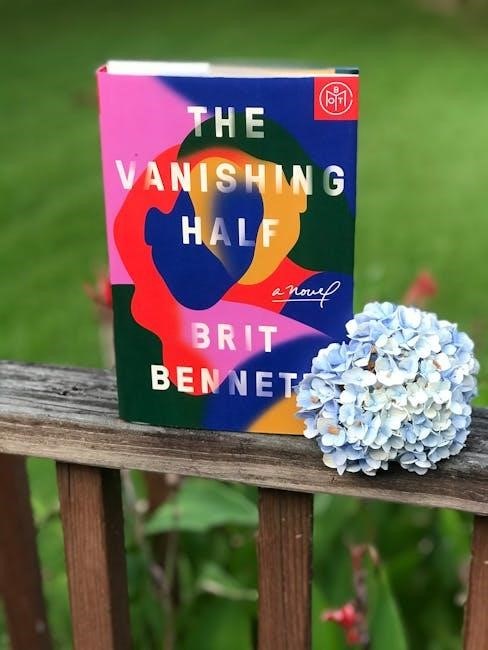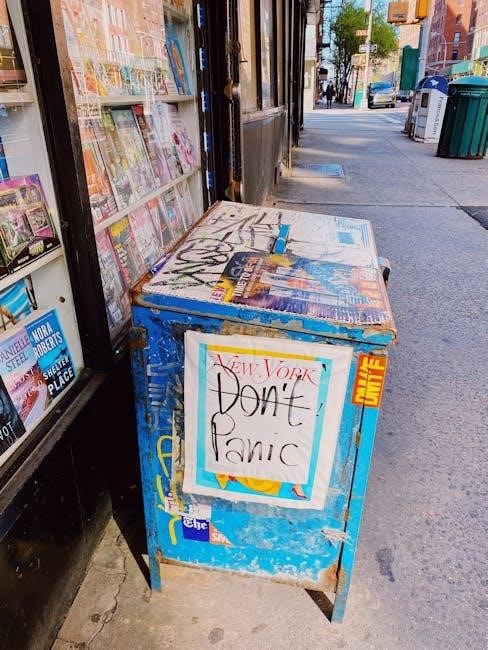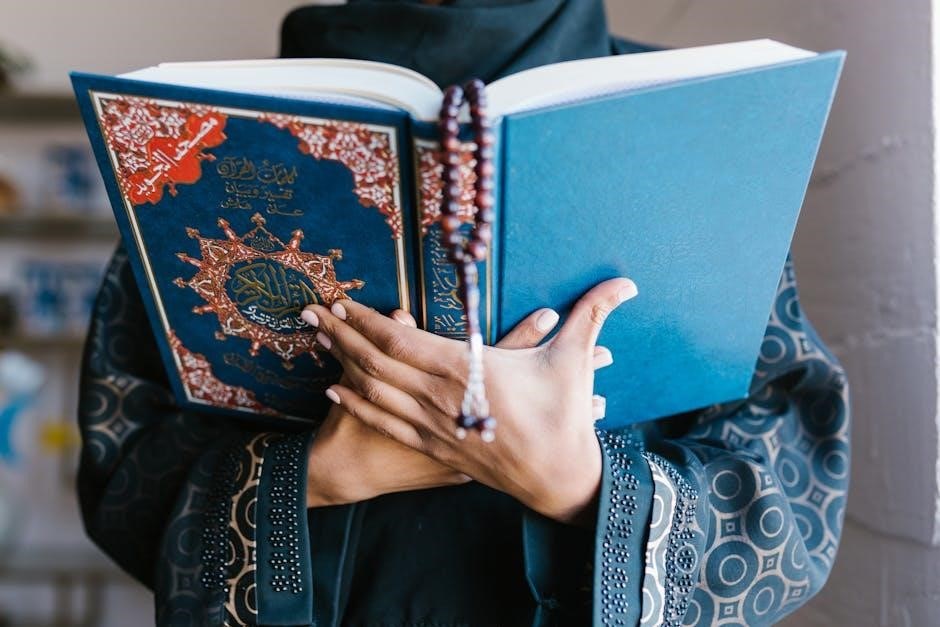blue is the warmest color book pdf
- Published
- in PDF
Title: Exploring “Blue Is the Warmest Color” Graphic Novel
Dive into the world of Jul Maroh’s acclaimed graphic novel, Blue Is the Warmest Color. This New York Times bestseller, adapted into a Palme d’Or winning film, explores love, identity, and coming of age in a tender and bittersweet narrative.
Blue Is the Warmest Color, originally Le bleu est une couleur chaude, is a French graphic novel by Jul Maroh, published in 2010. This poignant story transcends borders, exploring themes of love, self-discovery, and societal expectations. The English translation, released in 2013, introduced Maroh’s evocative storytelling to a wider audience. The narrative follows Clementine’s journey as she navigates adolescence and encounters Emma, a blue-haired artist. Their connection sparks a transformative exploration of identity and the complexities of love, set against the backdrop of French society in the 1990s and 2000s. The graphic novel received the Fnac ⎯ SNCF Essential prize, an award selected by the public.
About the Author Jul Maroh
Jul Maroh, a French author and illustrator, is the creative force behind Blue Is the Warmest Color. Their work delves into themes of identity, love, and social issues with a personal touch.
Maroh’s Background and Influences
Jul Maroh, hailing from northern France, cultivated their artistic talents at the Institute Saint-Luc, focusing on comic art. Maroh’s background significantly shapes the narrative of Blue Is the Warmest Color. The graphic novel, initially published in French, gained widespread recognition, leading to an English translation.
Their work reflects a deep engagement with social issues, particularly those concerning LGBTQ+ experiences. Influenced by personal experiences and observations, Maroh crafts stories that resonate with authenticity and emotional depth. The support from the French Community of Belgium aided in the development of their work, showcasing the importance of cultural backing in artistic endeavors.
Author’s Identity
Initially credited as Julie Maroh, the author’s identity has evolved since the original publication of Blue Is the Warmest Color. Newer printings recognize the author as Jul Maroh, reflecting their coming out as non-binary. This shift in attribution highlights the importance of respecting an author’s self-identified gender and name.
Maroh’s personal journey with identity deeply informs the themes explored in the graphic novel. The narrative resonates with authenticity, reflecting the author’s lived experiences and understanding of gender and sexuality. Their work serves as a powerful voice for LGBTQ+ representation in media, contributing to broader conversations about identity and self-discovery.
“Blue Is the Warmest Color”: Synopsis
Blue Is the Warmest Color tells the story of Clementine, a young woman, and her journey of self-discovery through her relationship with Emma, a blue-haired artist, in a poignant love story.
Clementine’s Journey of Self-Discovery
Clementine’s journey begins with a sense of normalcy, marked by friends and romantic attention from boys. Her life takes an unexpected turn after encountering Emma, a confident, blue-haired woman. This encounter sparks a period of introspection and questioning regarding her sexuality and identity. Clementine grapples with societal expectations, attempting to maintain a conventional relationship while feeling drawn to Emma. This internal conflict leads to a pivotal moment of self-realization when she acknowledges her feelings and embraces her true self. Her transformation is emotional, navigating the complexities of love, acceptance, and societal pressures during her formative years, ultimately defining her path.
Emma’s Role in Clementine’s Life
Emma plays a pivotal role in Clementine’s journey, acting as a catalyst for self-discovery and acceptance. Her presence challenges Clementine’s preconceived notions about love and sexuality, prompting her to question her identity. Emma provides a space for Clementine to explore her feelings without judgment, fostering a sense of comfort and understanding. As their relationship develops, Emma becomes a source of support and guidance, helping Clementine navigate the complexities of coming out and embracing her true self. Emma is more than just a love interest; she embodies freedom and authenticity, inspiring Clementine to live authentically.

Themes Explored in the Graphic Novel
Maroh’s work delves into universal themes. The graphic novel intimately portrays coming-of-age experiences, explores the complexities of sexual identity, and navigates the profound impact of love, loss, and societal expectations on individuals.
Coming of Age and Sexual Identity
Blue Is the Warmest Color intricately portrays Clementine’s journey through adolescence, marked by self-discovery and the exploration of her sexuality. Initially, Clementine navigates conventional relationships with boys, attempting to fit in and feel “normal.” However, her encounter with Emma sparks a profound shift, leading her to question her desires and societal expectations.
The graphic novel captures the confusion, vulnerability, and eventual liberation that accompany Clementine’s coming-out process. It highlights the challenges faced by young individuals grappling with their sexual identity in a world often shaped by heteronormative standards.
Love, Loss, and Societal Expectations
At its core, Blue Is the Warmest Color is a story about the complexities of love, its exhilarating highs, and its devastating lows. Clementine and Emma’s relationship is portrayed with raw honesty, capturing both the intense passion and the inevitable challenges that arise from their differences and societal pressures. The novel also explores the profound impact of loss, as Clementine’s untimely death leaves Emma grappling with grief and the enduring power of their connection.
Furthermore, the narrative confronts societal expectations surrounding relationships and sexuality, highlighting the discrimination and prejudice that LGBTQ+ individuals face.

Publication Details and Availability
Originally published in French as Le bleu est une couleur chaude in 2010, the English translation of Blue Is the Warmest Color was released in 2013. It is available through Arsenal Pulp Press.
Original French Publication
Blue Is the Warmest Color, initially announced as Blue Angel, was first published in French as Le bleu est une couleur chaude by Glénat in March 2010. This marked the debut of Jul Maroh’s poignant narrative, capturing the raw emotions of love and self-discovery. The original French edition introduced Clementine and Emma to the world, setting the stage for the graphic novel’s future acclaim. Supported by the French Community of Belgium, the novel was promoted at the 2011 Angoulême International Comics Festival, where it received the Fnac-SNCF Essential prize, a public-selected award, highlighting its immediate connection with readers. Maroh started the comic at the age of 19 and took five years to complete it.
English Translation and PDF Availability
The English-language edition of Blue Is the Warmest Color was published by Arsenal Pulp Press in 2013, bringing Maroh’s story to a wider audience. This translation allowed English-speaking readers to immerse themselves in Clementine’s journey of self-discovery and her relationship with Emma. For those seeking digital access, a PDF version of the graphic novel is available online, offering a convenient way to experience the story. This availability has further broadened the graphic novel’s reach, allowing readers to easily access and share Maroh’s impactful work. The deal for its English translation, to be released in September 2013, was made at the 2012 Frankfurt Book Fair.

Adaptation into the Film “Blue Is the Warmest Colour”
Abdellatif Kechiche adapted Blue Is the Warmest Color into a film starring Léa Seydoux and Adèle Exarchopoulos. The film garnered critical acclaim, winning the Palme d’Or at the 2013 Cannes Film Festival.
While the film adaptation of Blue Is the Warmest Color closely follows the graphic novel’s initial storyline, significant deviations emerge in the latter part of the narrative. A key difference lies in the ending, where Adèle, Clémentine’s counterpart, is still alive in the film, contrasting with Clémentine’s death in the graphic novel. The film suggests that irreconcilable differences lead to the lovers’ separation, whereas the graphic novel explores themes of addiction and its devastating consequences. These alterations contribute to distinct interpretations of the characters’ journeys and the overall message conveyed by each medium.
Critical Acclaim and Awards
Blue Is the Warmest Color, both the graphic novel and its film adaptation, have garnered widespread critical acclaim, solidifying their place in contemporary media. The film, directed by Abdellatif Kechiche, achieved prestigious recognition by winning the Palme d’Or at the 2013 Cannes Film Festival. This award highlighted the film’s artistic merit and its impactful portrayal of love and identity. The graphic novel, similarly praised for its poignant narrative and visual storytelling, has been recognized as a New York Times bestseller, further attesting to its cultural significance and resonance with readers worldwide. Both versions continue to spark discussions.
Controversies and Criticisms
Despite acclaim, Blue Is the Warmest Color faced controversies. Criticisms arose concerning the film’s explicit content and differences from the graphic novel. International reactions also varied, sparking discussions about representation and cultural sensitivities.
Differences between the Graphic Novel and the Film
While the film adaptation of Blue Is the Warmest Color closely follows the graphic novel’s initial plot, key differences emerge. The film, directed by Abdellatif Kechiche, renames Clémentine to Adèle and presents a divergent ending. Unlike the graphic novel, Adèle remains alive, and the relationship ends due to irreconcilable differences, as suggested in the film.
The graphic novel’s exploration of Clémentine’s drug addiction and its fatal consequences is absent in the film. These narrative alterations contribute to distinct interpretations of the characters’ journeys and the overall themes of love and loss, leading to varied audience experiences.
Conservative Groups in Iran criticised her
Sepideh Jodeyri, an Iranian poet residing in the Czech Republic, undertook the task of translating Blue Is the Warmest Color into Persian, titling it Abi Garmtarin Rang Ast. This endeavor, however, faced considerable backlash from conservative groups within Iran. The sensitive subject matter and LGBTQ+ themes present in the graphic novel sparked controversy and condemnation.
Despite initial plans for a public debut of the translated work in Tehran, the event was ultimately canceled due to mounting pressure and opposition. The incident highlights the cultural and political sensitivities surrounding LGBTQ+ representation in certain regions.

Legacy and Impact
Blue Is the Warmest Color has significantly influenced LGBTQ+ representation in media. Its raw and honest portrayal of love and self-discovery has paved the way for more inclusive storytelling, resonating with audiences worldwide.
Influence on LGBTQ+ Representation in Media
Blue Is the Warmest Color holds a significant place in LGBTQ+ media representation. The graphic novel’s sensitive portrayal of Clementine’s journey of self-discovery and her relationship with Emma offered a nuanced perspective on lesbian love and identity. It contributed to a broader cultural conversation about LGBTQ+ issues, challenging stereotypes and promoting understanding.
The story’s exploration of societal expectations and personal struggles resonated with many readers, fostering empathy and visibility. Its impact extends beyond the literary world, influencing film, television, and other forms of media to embrace more authentic and diverse LGBTQ+ narratives, leading to increased representation.
